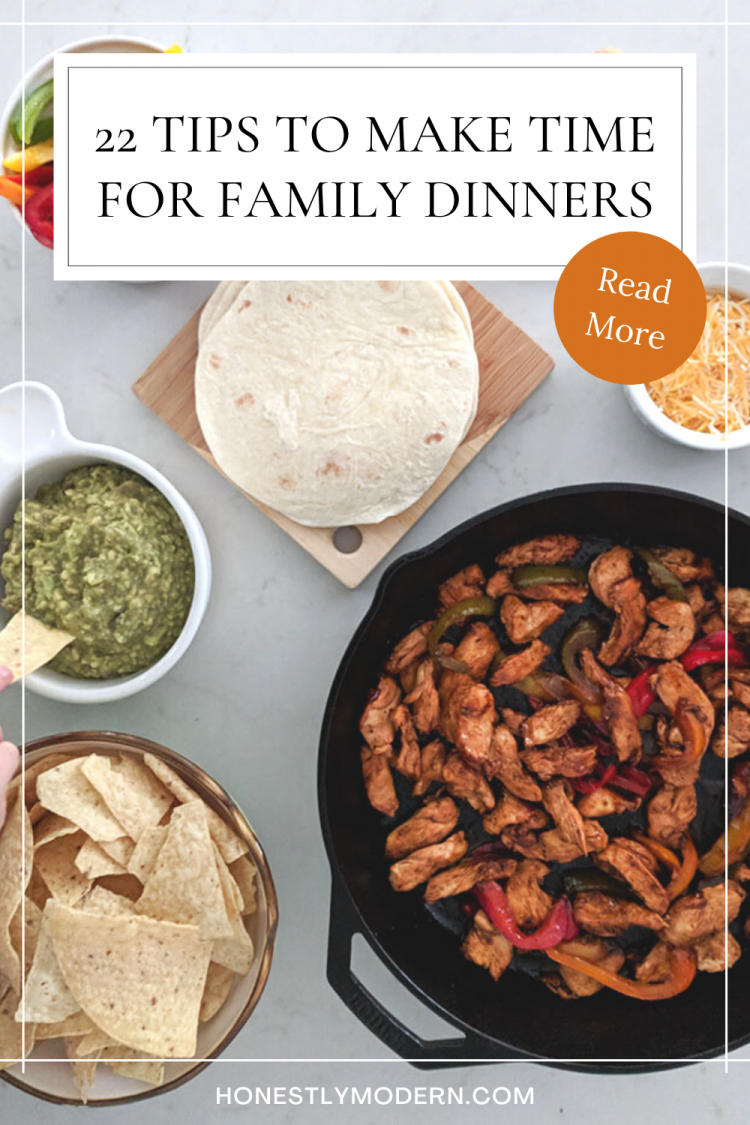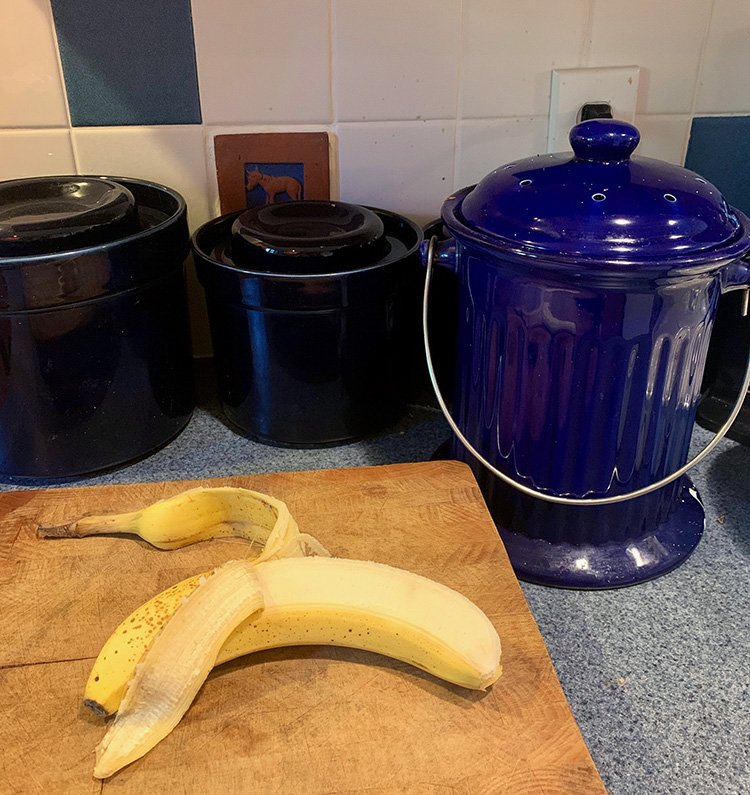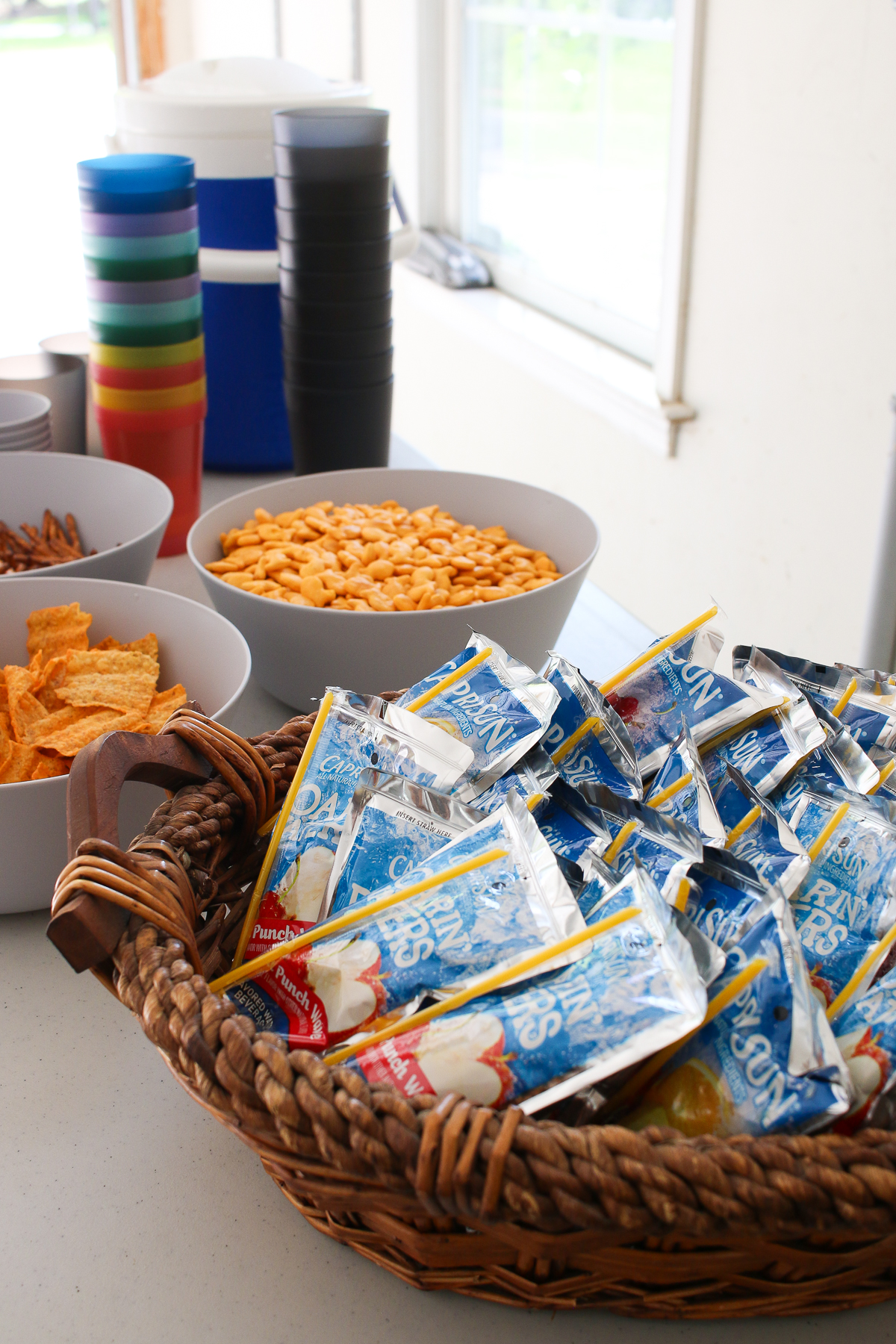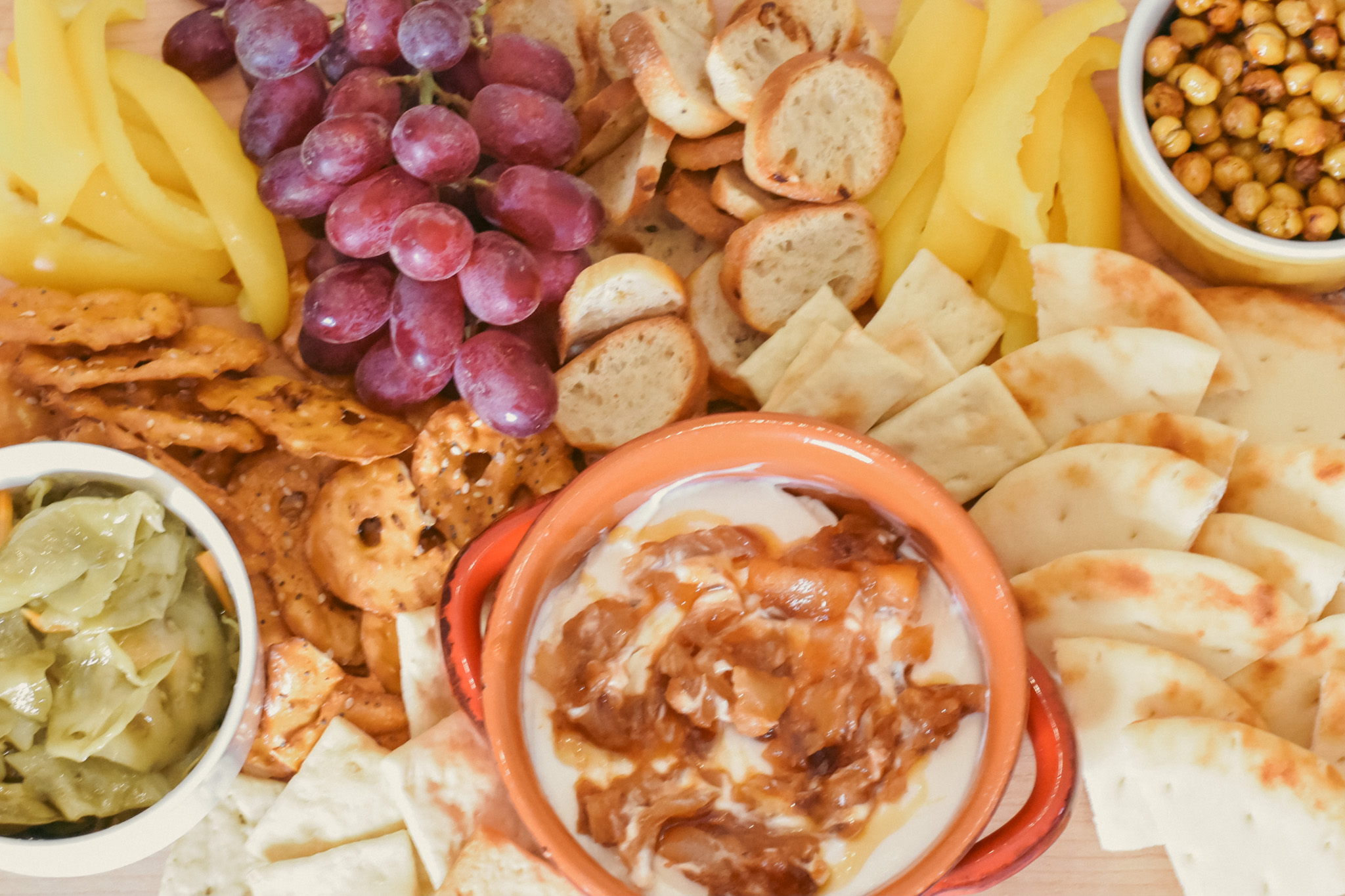22 Tips To Make Time For Family Dinners Around Extracurricular Activities
Trying to find time for family dinner around sports and other extracurricular activities? Making time to eat dinner as a family is no easy task, especially when children participate in after-school activities. Between work, school, and everything else on the calendar, families have more than enough demands on their time.
Family dinners, however, are really important and NOT impossible, so check out this guide with plenty of ideas to help you make time for family meals even around extracurricular activities.
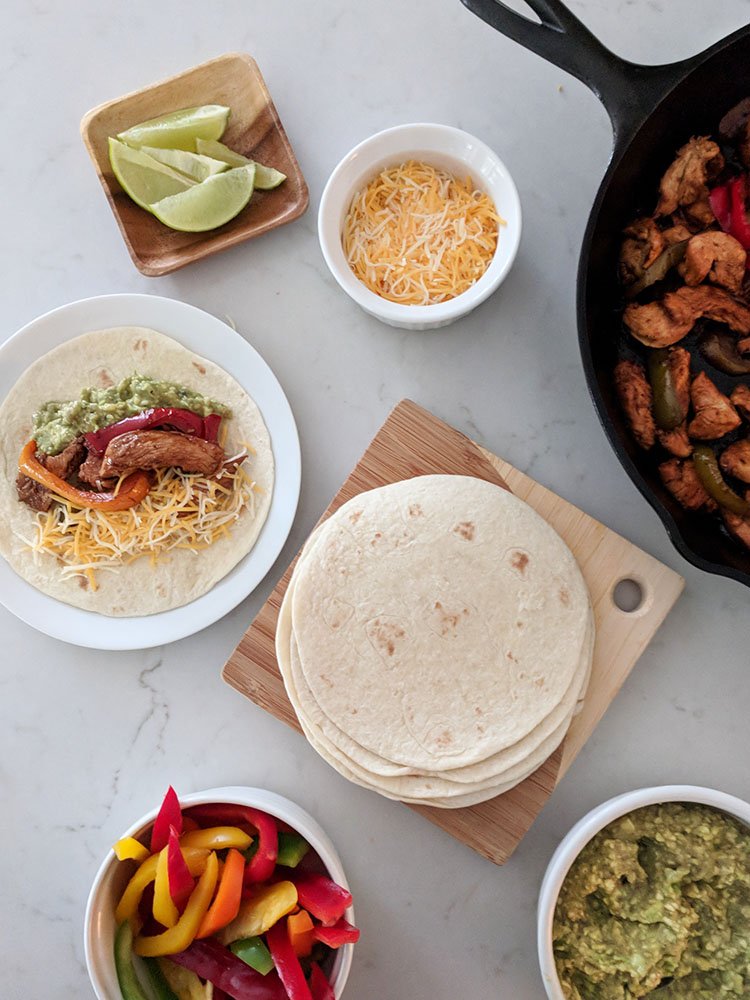
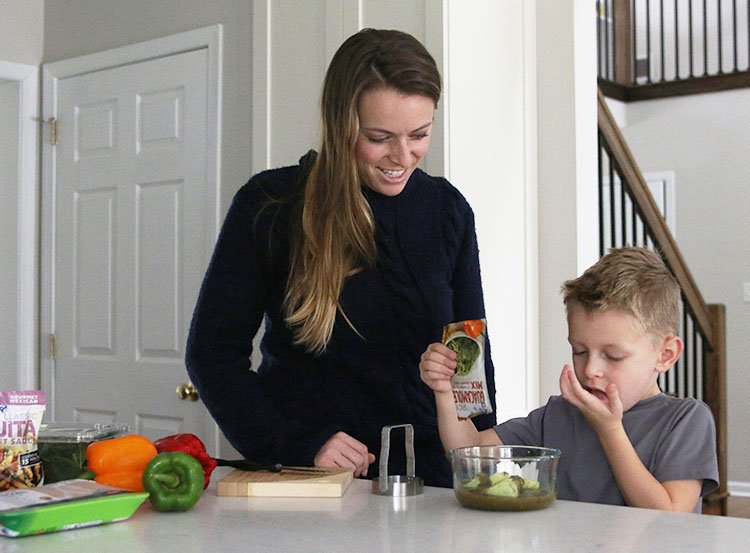
Did you know I love guacamole? Probably not, but now you do! And I have a “secret” guacamole recipe that I know you’re going to love. It’s tried and true, something we’ve been using for years and that has received rave reviews from just about anyone who tries it. If we invite you to our house, I guarantee we’ll serve chips and guac, so bring your appetite.
I’m a big fan of guacamole not only because it’s delicious, but it also makes so many other meals so good. Often, I design entire weekly meal plans around guacamole. (I’m not kidding one bit.) Guacamole is delicious but also doesn’t last long, and I want to be sure we don’t waste it. We make a batch of guacamole to have with tacos (a family favorite), and then have it in egg burritos for breakfast, on fajitas later in the week, and with chips for lunch. I’m definitely guilty of eating just chips and guac for lunch.
I suspect you’re dying to have the secret recipe for this guacamole beloved by so many? Just two ingredients: avocados and Frontera guacamole mix. That’s it! It’s so easy, takes two minutes to make, is delicious, and it’s not full of a bunch of junk. Now you know why I plan our family dinners around it!
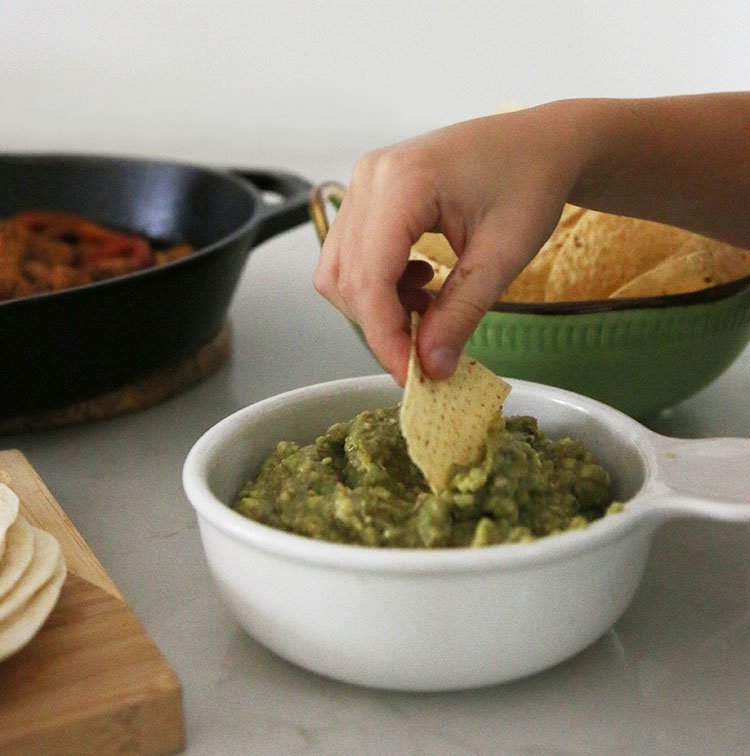
Once in a while, I make a grand family dinner, and it’s pretty great. Most nights, however, family dinner in our house is a “hodgepodge” of leftovers, something that sat in the slow cooker all day, or tacos with chips and guacamole.
While our family dinners don’t look like a formal three-course production, we rarely rely on fast food meals on the go to replace dinner at home. I don’t say this to suggest we have some special skills, but because I think it’s a lot easier than many people think to eat together as a family.
Before throwing up your hands in disgust, hear me out. Just a little bit of planning goes a long way to eating together as a family for most of your meals, and there’s some pretty compelling evidence to suggest it’s worth the investment.
Research Shows Family Dinners Foster Supportive Family Cultures for Children
The benefits of family dinner are well-documented. According to a variety of research, children and young adults who participate in family dinners:
- Develop better literacy skills and have higher academic performance.
- Engage is less high-risk behavior.
- Experience less depression and anxiety.
- Have healthier diets as adolescents and into young adulthood (resulting in lower levels of obesity).
Despite all the competing demands and busy schedules, these are incredibly compelling reasons to prioritize and make time for family dinners, even in the face of extracurricular activities. Let’s dive into the details of each of these aspects a little bit further.
1. Better Literacy Skills
Family dinners discussions surround children with conversations about topics that often aren’t discussed elsewhere. Consequently, these dinner discussions introduce more advanced vocabulary, teach social lessons about how to speak with others, and expose children to new topics. They also contribute to better literacy skills and the ability to learn to read at an earlier age.
2. & 3. Less Likelihood to Participate in High-Risk Behaviors; Less Depression & Anxiety
Research shows that family dinners offer adolescents an opportunity to discuss things happening in their lives, from significant world events to the minutiae of their day. These discussions help families connect and also reduces stress levels for children, which in turn can decrease depression and anxiety.
We hope youth sports and extracurricular activities offer kids a chance to release energy and decrease stress. We know that’s not always the case, however, particularly for overscheduled kids in highly competitive leagues. Sometimes, sports and other activities may be the cause of added stress and anxiety.
Family dinners offer a safe reprieve from the competition and intensity of coaches, instructors, and teammates. Hint: Parents should save performance discussion for a forum other than the dinner table; leave mealtime for peaceful and enjoyable conversation.
According to research published in the Journal of Adolescent Health, connecting as a family and reducing stress (i.e. the benefits of family dinner) both result in children being less likely to participate in high-risk behaviors like drug and alcohol abuse, sexual activity, violence, and other anti-social behavior.
4. Healthier Eating Habits (Today and Into The Future)
Beyond social and mental health benefits, adolescents who eat family dinners, on average, eat healthier diets that include more fruits and vegetables, less fried foods and soda, and less saturated and transfat. In a society increasingly burdened by the health consequences of obesity, this is tantamount. Furthermore, children not only eat healthier during the meals but (not surprisingly) develop better long-term eating habits into young adulthood.
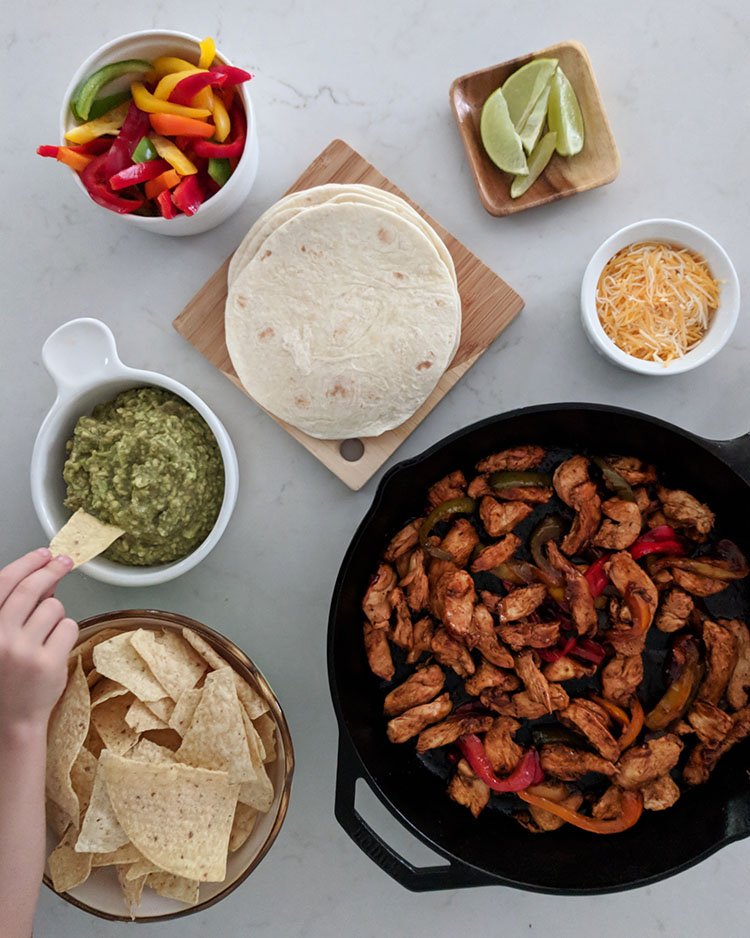
Making Time For Family Dinner Matters… So Why Don’t We Do It?
Extensive research offers seemingly definitive support that family dinners provide a unique opportunity for families to share, connect and reflect on their daily lives as well as appreciate and build healthier relationships with food and good eating habits.
All this is not to suggest a strong family dynamic is impossible without family dinners. Family dinners aren’t the panacea for all the world’s problems. However, family dinners strengthen a family culture and increase a child’s likelihood of success in life, according to research published in the Journal of the American Medical Association.
We see the facts. We all agree that we should strive for regular family dinners, yet they’re far too infrequent. When we sign up our children to participate in competitive or frequent extracurricular activities, it becomes increasingly difficult to make time for the family dinners in our jam-packed calendars.
Does that mean we are prioritizing extracurricular activities over family dinners?! Should we be?! At what cost are we doing this and is there a better way?!
Our kids participate in after-school activities. They play lots of competitive sports, have taken piano lessons, have tried after-school clubs, and more. I’m not suggesting we forego all these fun activities that contribute to our children developing a variety of social and tangible skills.
At the very least, however, I think we can do better than exchanging high fives every evening as we pass each other in the kitchen on the way to different fields, clubs, and studios around town.
22 Tips To Make Time For Family Dinners Around Extracurricular Schedules
PLAN! Meal Planning Is Family Dinner Magic (and You Probably Have Time To Do It)
Everyone knows that meal planning makes eating healthier and enjoying family dinners so much easier, yet few people follow through on the exercise.
The honest trust is… just about everyone has time to plan a menu for the week. It only takes a bit of time and, in the long run, saves time throughout the week. Not to mention, meal planning helps reduce food waste too.

1. Keep a Meal Planning Notebook
When planning meals, record meals in the same notebook each week. I use a thin notebook that’s easy to toss in my bag. I prefer a notebook to individual pieces of paper because previous meal plans are all in one place and I can reuse meal ideas from prior weeks.
Somehow, family dinner favorites occasionally seem to fall off the list of “old standbys” and having the previous weeks’ menus is a great resource for ideas.
Dinner tends to require the most planning, while we typically eat leftovers or simple foods for breakfast and lunch. Thus, I include a menu idea for dinner each night and then jot down a few general ideas for lunch and breakfast to last the week.
When feeling particularly ambitious, I write my grocery list by section of the grocery store in the order of the store. It helps ensure grocery shopping is a bit more efficient because, without it, I always end up backtracking for something.
2. Put Family Dinner On Your Calendar and Commit
Schedule time for dinner together on a family calendar and give the meal the same priority sports games and other extracurricular activities receive. After all, research provides pretty definitive and compelling data that family dinners are probably more important and provide greater long-term health and wellness benefits than most of the extracurricular activities stuffed into nights and weekends.
3. Plan Meals In The Margins
Don’t discount the value of the margins of your schedule, those small pieces of time we often end up scrolling social media. If you can’t sit down and plan a tentative menu and grocery list all at once, spend 10-15 minutes a few times a week to piece it together. You can make it while you wait in line at a store, during commercials of your favorite TV show, while you commute to and from work on the train or bus, or even during the warm-up time at the sports game (if you’re not the coach).

4. Plan Meals With Your Calendar
Set aside time once per week (or during your ten-minute intervals throughout your day) to plan meals for the week. Open your calendar while you plan meals, so you can consider which nights are busy, which nights one parent is out of town, and which nights are quiet and might be most suitable for a more robust or traditional family dinner.
Build Meals Plans Together Around Food You Have and Family Favorites
5. Focus On The Food You Already Have
Make a concerted effort to use ingredients you already have on hand. This saves money, reduces food waste, and is generally common sense.
However, it can also help you hone in on a focus for your meal plan. Sometimes endless options feel paralyzing and a few guardrails, like using up ingredients you already have, provide direction to build a great weekly family meal plan.
Related Reading: Simple Tips To Reduce Food Waste With Kids
6. Ask Your Family For Suggestions
For most families, a spouse or significant other should be able to suggest meal plan ideas. As young as three or four years old, kids can offer up ideas of what they want. You don’t have to honor every request, but it’s a great starting point for brainstorming.
Sometimes just the drudgery of coming up with ideas becomes a barrier for me. A few suggestions can get me over the obstacle and make meal planning so much easier.
7. Consider Having a Theme During a Week
As I mentioned above, I sometimes build a menu around a special ingredient. The last time I made guacamole, for example, I included fajitas, tacos, and egg burritos on the menu for the week. Although we add guacamole to all of these things, they are all different enough that it doesn’t feel like eating the same thing every day.
To make the fajitas, for example, I cooked up some sliced chicken, frozen sliced peppers already in our freezer, and mixed them with the Frontera fajita packet. We had a nutritious dinner in about twenty minutes.
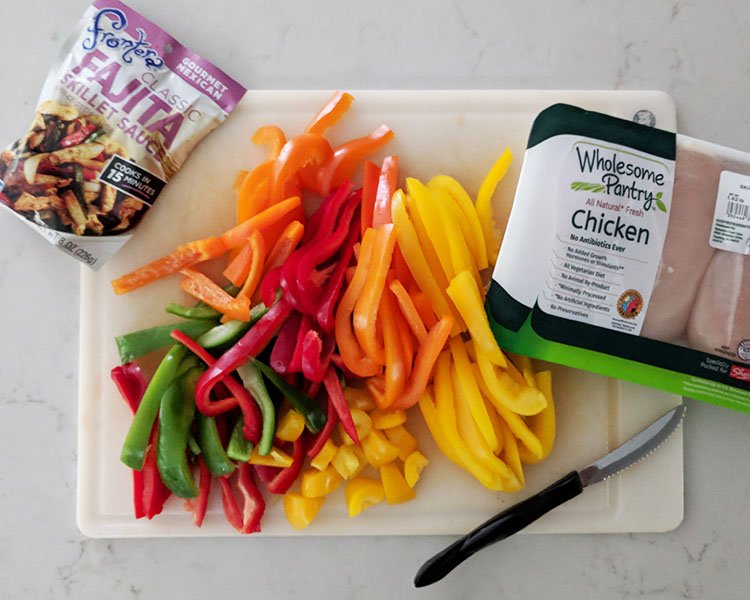

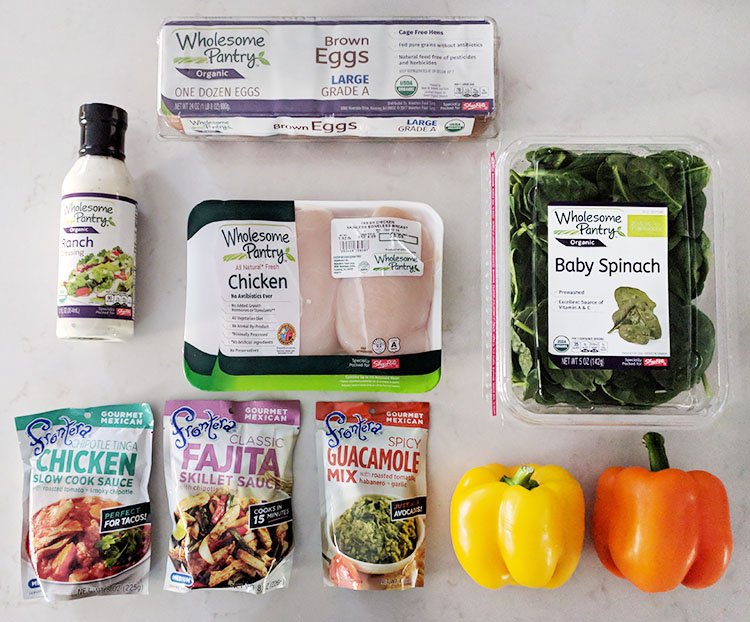
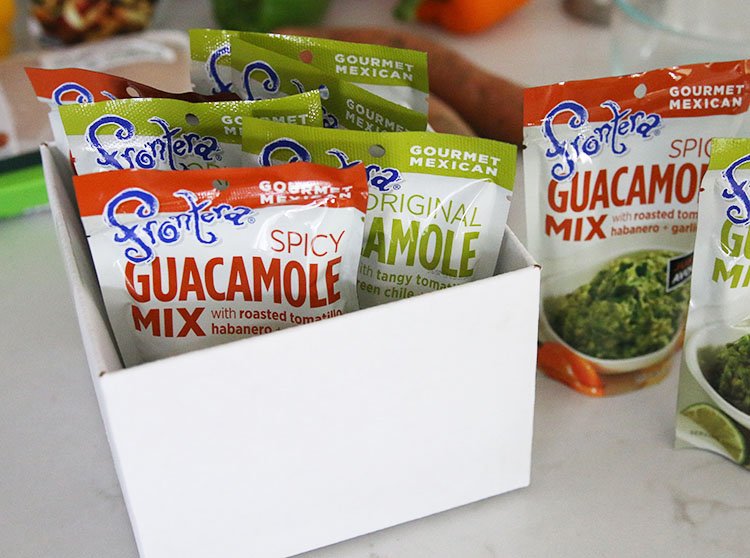
8. Have Some Back Up Family Dinner Menu Ideas (and don’t stress about not following the meal plan exactly)
Life happens and you’re bound to have days that don’t go as planned. Even with the best of intentions, the meal plan will probably fall apart at some point during the week. Keep a list of 4-6 simple backup ideas that always work and keep the ingredients in your pantry or freezer.
For us, tacos, chicken quesadillas, and pasta with red sauce are simple meals we can whip up even when the night tailspins. Sometimes we even throw in the towel and order pizza. It’s still family dinner when we all enjoy it together.
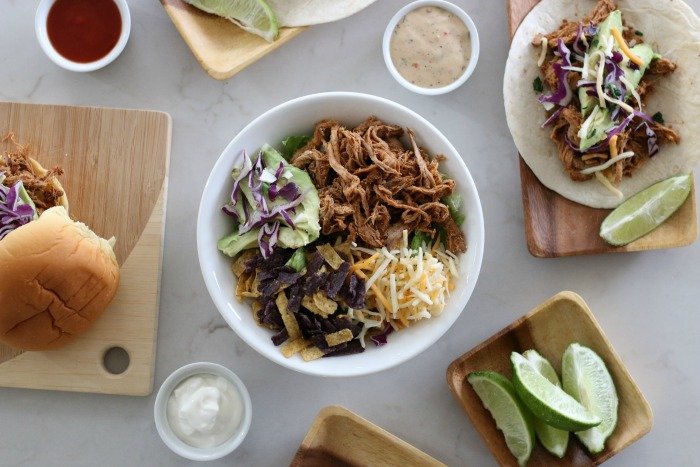
9. Build Around Basic Proteins
Prepare one or two simple, flexible proteins over the weekend or on a less busy evening to have on hand. Almost every week, we have grilled chicken, meatballs, or tuna fish in the fridge, prepared and ready to eat. With grilled chicken, for example, you can easily whip up wraps, quesadillas, salads, rice and veggie bowls, and more.
10. Follow Some Great Family Cooks For Ideas
There are plenty of really great food bloggers and family cooks offering up countless ideas that really work well for families with children. Find just a few that you really like and follow them on social media or sign up for the emails (or however they most commonly communicate with their audience).
11. Keep It Simple
What you’re eating, within reason, of course, is less important than just eating together and connecting. Don’t get hung up on having to share “fancy” meals when something quick and simple does the trick, especially if the alternative is to skip family dinner entirely.
Gain Efficiencies When Making Meals For Families
12. Cut Produce or Cook Meat in Small Pockets of Time
Use mornings or weekday evenings to cut up produce or grill some extra chicken or ground beef. Sometimes, I cut up vegetables, like the peppers we used in the fajitas, for a dinner later in the week while the boys eat breakfast. If I’m already at the stove making scrambled eggs for breakfast, I might also saute chicken to have on hand for the week.
13. Make Double Batches for Leftovers (& Eat Leftovers!)
You do not have to stand in the kitchen every night to put a good meal on the table. When you do cook, make more than you need for one night. You might even use weekends or quiet nights to prepare a double batch of a “fancier” meal and have leftovers for lunch or a quick yet tasty dinner later in the week. Doubling a recipe takes almost no extra time and offers up twice the benefit.
14. Make Slow Cooker Meals
Preparing a few ingredients and letting the slow cooker do the hard work of cooking while you go about your business all day is basically the best. We’re big fans of the slow cooker in our house and use it about once a week. Frontera slow cooker sauces make this option nearly foolproof. Find a handful of slow cooker recipes that you love and run with them.
15. Buy Groceries Online
If the hardest part of meal planning is trudging to and through the grocery store, nix it. Most grocery stores offer online or curbside pick-up shopping options. Surviving the grocery store with children or on a busy Sunday afternoon might be the pits. If it’s a barrier to family dinners because you just despise the drudgery of grocery shopping, ditch it.
16. Have The Kids Help
This might not seem like an obvious way to help. Isn’t cooking with kids a royal mess? Young children in particular tend to make cooking a slower and messier process, often requiring a significant amount of patience.
Younger children can help, however, when you’re preparing food in advance on the weekends. Let them stir something to stay engaged while you do the bulk of the work. Older children can contribute in a more meaningful way, particularly if they have been exposed to cooking at a younger age.
Don’t let the kids off the hook. Not only will they provide an extra set of hands, but they’ll also learn some great life skills and better appreciate what ends up on the table each night. You better believe my kids can mix avocados and Frontera guacamole mix!
My boys spend quite a bit of time in the kitchen, and we’ve gathered up a few ways to make the learning and cooking process more fun and effective. Check out these 8 ways to have fun cooking with kids. Help them develop strong culinary skills for themselves and to help you make easy family meals.
Related Reading: 14+ Tips For Fun and Easy Baking With Kids
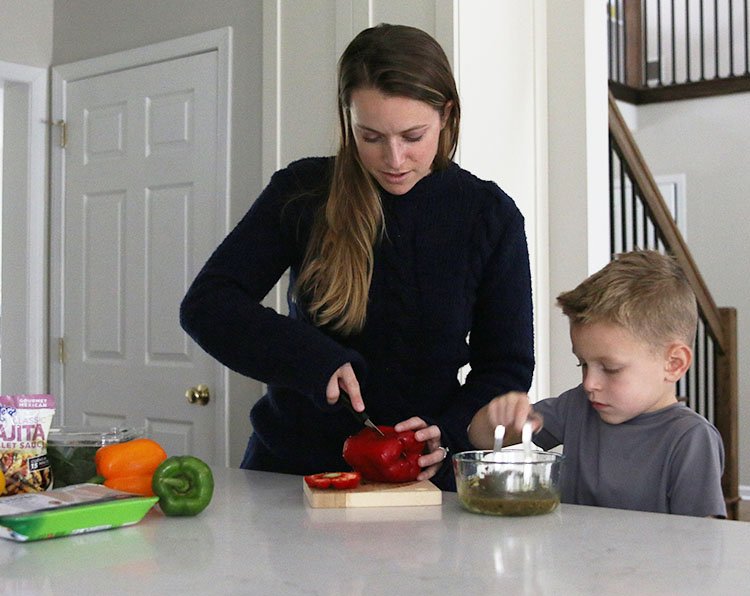
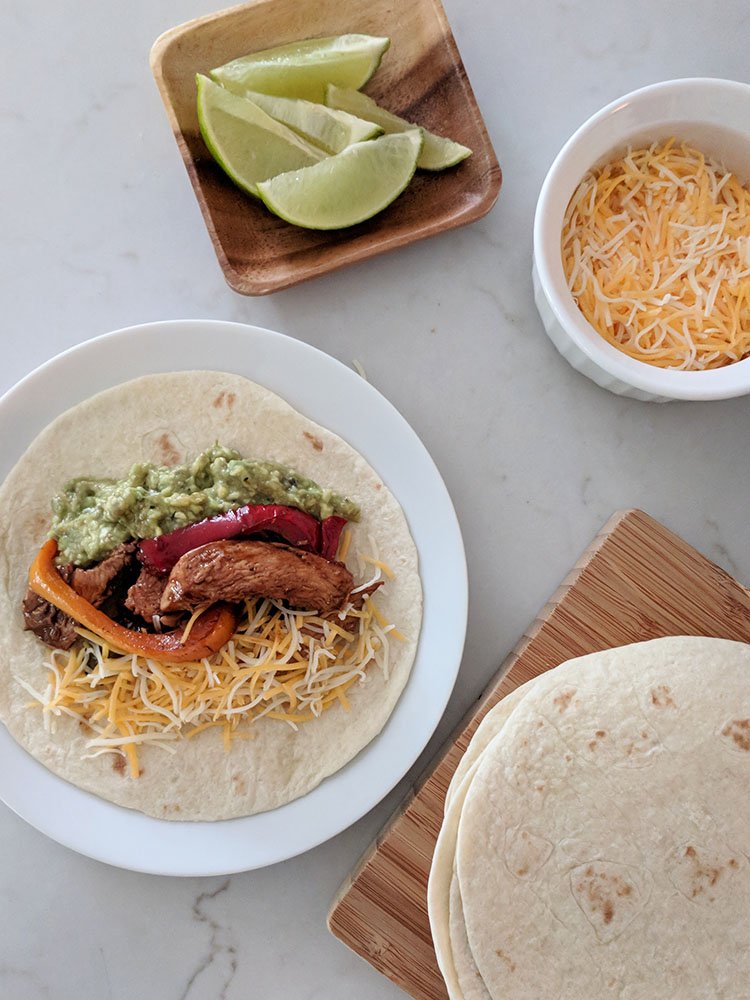
Family Dinner Doesn’t Have To Be Traditional
Most of us probably envision family dinners in a traditional manner. We all sit down around the dinner table to a balanced meal cooked from scratch.
While that’s wonderful when it’s an option, family dinner doesn’t have to happen seven days a week and always look the same. Consider some of the following alternatives to family dinner that may not look traditional but still offer value in practice. Many of them often take less time than stopping at a fast-food restaurant.
17. Eat Dinner in Shifts
When working around sports or other activities, family dinner might happen some nights in shifts. One parent eats with one or some of the children before a game and the other parent eats with the rest of the kids after a different practice or game. Even though not everyone is eating together, parents still get quality time to connect with their children and catch up on their days.
18. Leftovers Totally Count
You don’t need to make a fresh meal to eat together at the table. Heat up leftover taco meat in the microwave, wrap it up in a tortilla and call it a meal. Chat with your kids about their school day for ten minutes while you eat tacos, and you’ve definitely had a family dinner.
19. Keep It Quick
A nice, long, and relaxing dinner might be the envy of your eye, but 15 minutes of time together around the dinner table is better than zero. If need be, sit together for a few minutes. Put away electronics to make the shared time at the table worthwhile, but don’t consider it a wasted effort just because it doesn’t last an hour. Fifteen minutes can be plenty of time to connect with your kids and allow them to share their stresses and successes from the day.
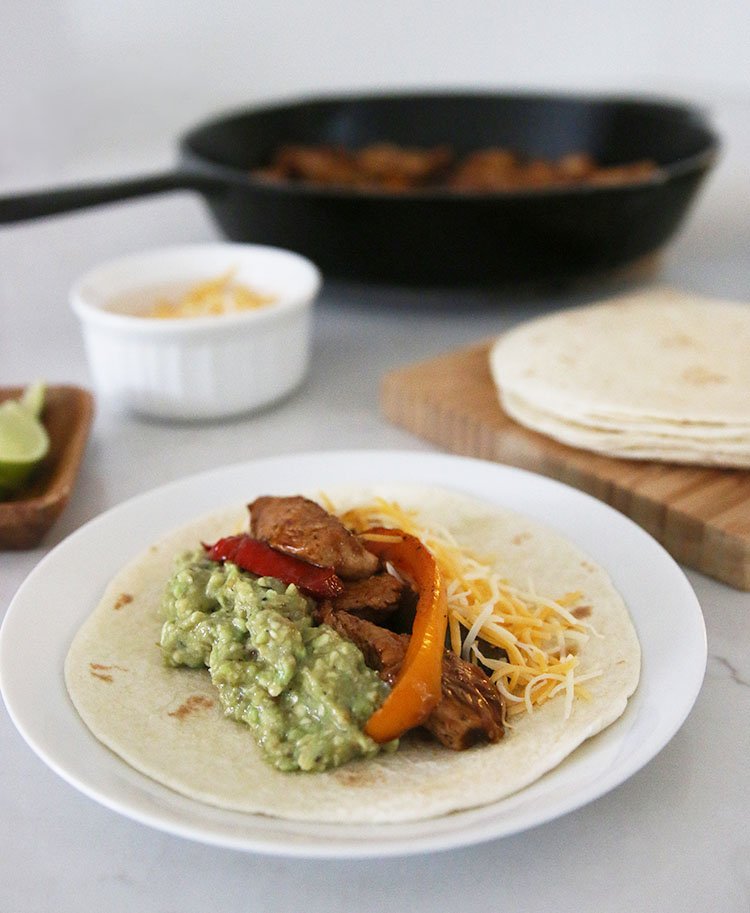
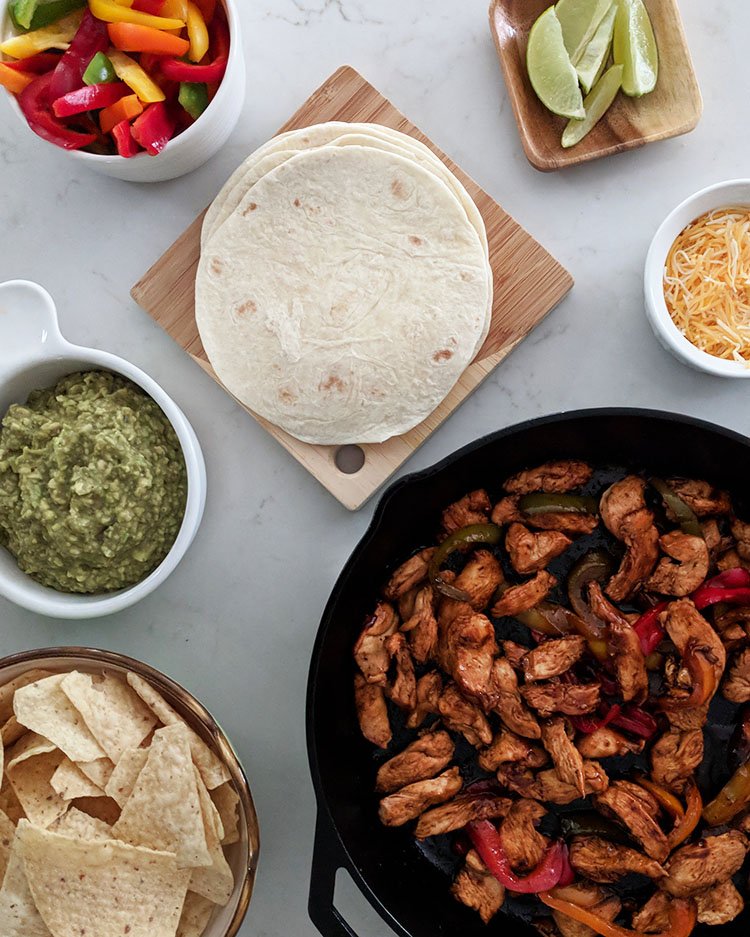
20. Have a Picnic
If you’re running between games, bring a picnic and sit together at a table near the field, court, or arena. You might even sit in the trunk of your SUV or van while you eat together for 15 minutes. Even if you don’t have time to get home and make a glorious three-course meal, you still get to catch up about and reflect on your day together.
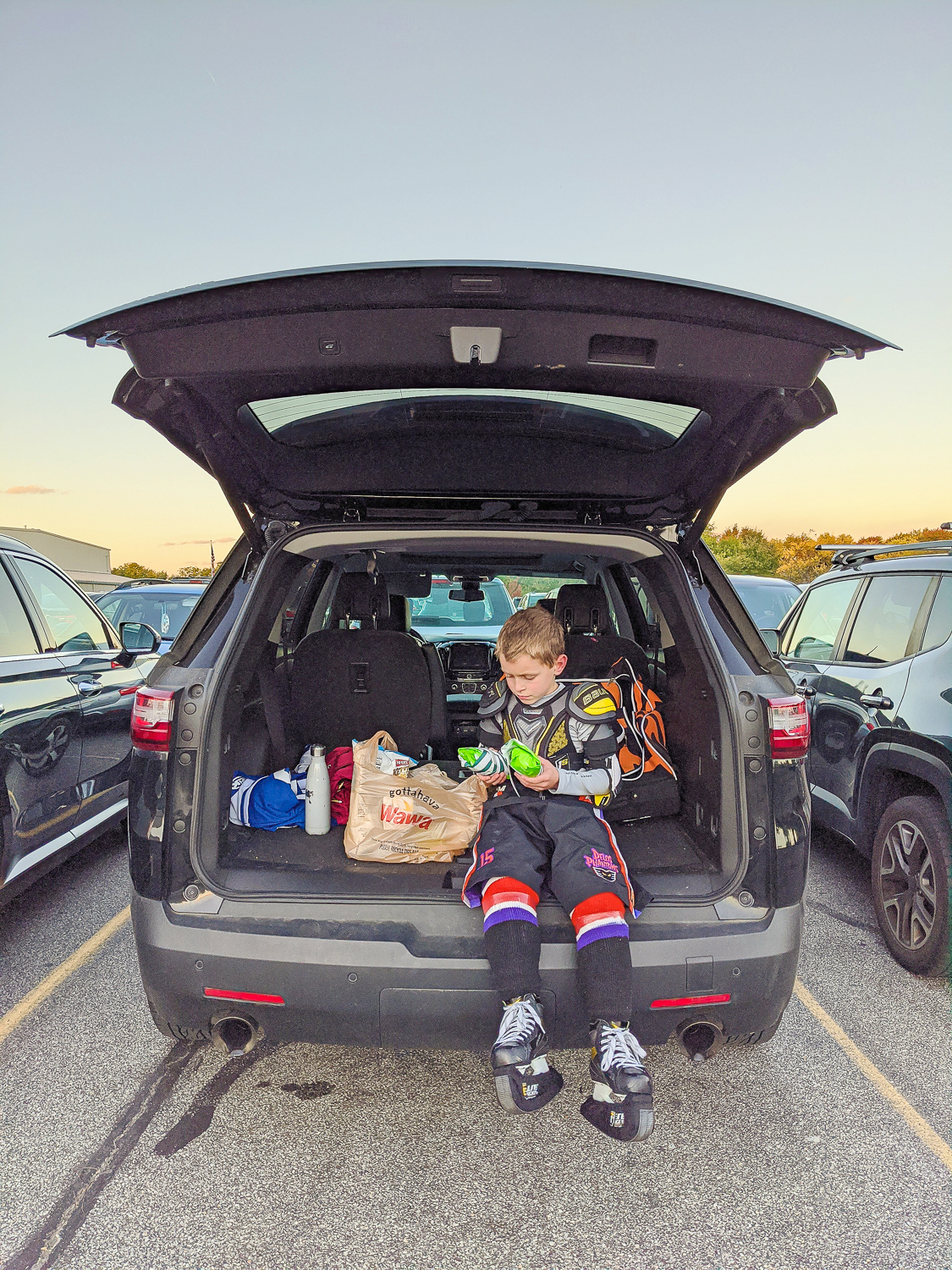
21. Breakfast and Lunch Count Too
Sharing a family dinner doesn’t offer any unique benefits over eating breakfast or lunch together. If dinner seems impossible but breakfast or lunch is more reasonable meals to share, go for it! The primary benefits of family meals stem from conversation and connection with each other as well as consistent exposure to healthier and wholesome foods.
Related Reading: Whole Wheat Banana Spice Pancakes
22. Have a Leftover Charcuterie Board For Dinner
When I’m really not sure what to make for dinner and we have a bunch of different odds and ends in the fridge, my boys love a leftover “charcuterie” board for dinner. Charcuterie board is a loose term because we just add a bunch of miscellaneous items from the fridge we need to use up. It’s not necessarily meats and cheeses.
Gather whatever you have in your fridge and place it on a cutting board. It’s pretty amazing how much more excited my boys get about a simple dinner when it looks nice and they feel like they have a choice about what to eat.
Related Reading: 6 Easy Tips To Make A Charcuterie Board
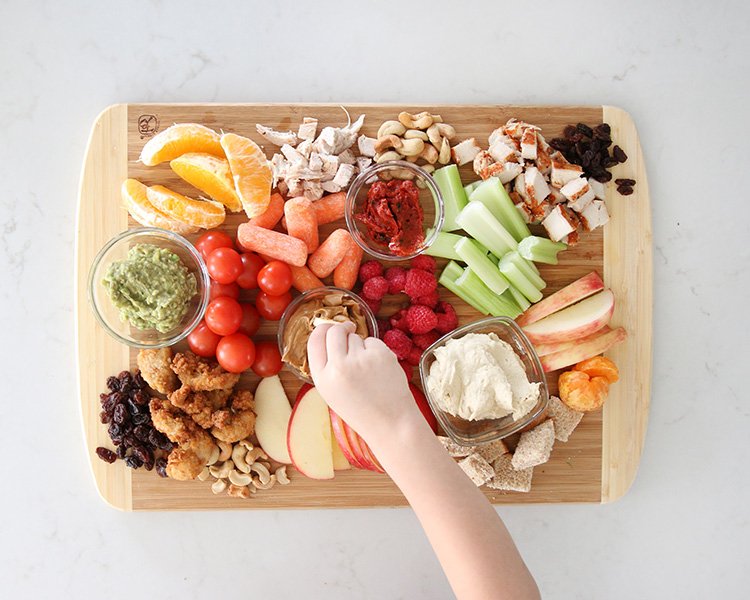
23. Creative Family Dinner Alternatives Totally Count
Hopefully, some nights during the week, family dinner can be more traditional. But get creative and find options that work for your family. Most likely, some options will work during certain seasons of life and other creative family dinner ideas will be more suitable for other seasons.
If a week consists mostly of mixed and matched nights of traditional and modified family dinners, that’s a win and your family still achieves many of the strong family culture benefits that family dinners support.
Be Flexible and Get Creative To Make Family Dinner Feasible
Not all of these ideas will work together or work all of the time when trying to bring your family to the table to eat together.
However, a little planning paired with a bit of patience goes a long way. Do your best as many days a week as you can to eat something together somewhere for dinner and create your version of family dinner around extracurricular schedules.
When you have a bad week, don’t beat yourself up (this is what we tell our kids, right?). Try again next week with a calendar in hand to give yourself the best shot of making time for family dinner despite the busyness.

